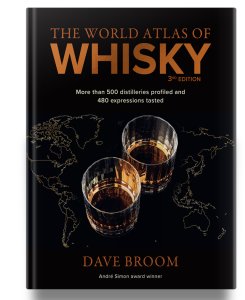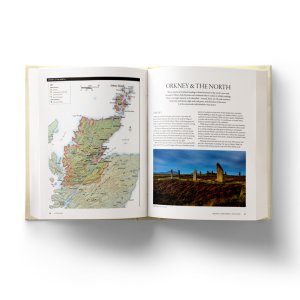A NEW WORLD ATLAS OF WHISKY!

I wrote the first World Atlas of Whisky in 2010. The second edition came out in 2014. In the following decade, the whisky world has changed utterly. There are now in excess of 3,500 distilleries making whisky, sometimes exclusively, sometimes as part of a mix of other spirits. Joy for a whisky lover, a challenge for a writer and I am both of these things.
And, yes, it took me longer than I imagined but there was the Manual series, then the Place series… plus COVID. Before I knew it, eight years had passed and the whisky world had changed. Utterly.
This means that this book isn’t an update, but a complete rewrite, with more distilleries profiled (500 compared to 250 in the 2nd edition), more whiskies, more countries. The approach, however, is the same. At its heart this is a book about flavour, people and place.
It will show you where distilleries are, but more importantly, what the whiskies made there taste like and why they taste the way they do.
The differences between distilleries are fascinating, but so are the shared characteristics. Even with a map it can be hard to navigate this world. So, to avoid the idea that all whiskies from one region or one country are the same, the tasting notes group whiskies together by flavour. It shows connections, contrasts and how regional and international boundaries melt away.
At the risk of offending the shade of the beer-loving, wine drinking Jane Austen, two words came to mind after months of conversations with distillers and trying their wares. Style and Sensibility.
Style is the manner in which something, in this case whisky, is made as, well as referring to its characteristics. Sensibility on the other hand is the sensation which the distiller has in creating their whisky, and the response we have when drinking it.
The idea of style can be taken as something which gives a degree of similarity ‘made in this style’ which is something which, as humans, we look for. We like patterns, categorising and groupings. It makes the world easier to understand.
However, what is as relevant – and more exciting – in today’s whisky world is sensibility, the mindset of today’s distiller and how they are moving this thing called whisky forward.

Whisky is not fixed. It moves, oscillates, weaves. It adapts and evolves, and at no time have those changes been more dramatic than in the past decade. We are now in a world where there are more distilleries than at any time in whisky’s history. There are more countries than ever making it.
Distillers around the world have taken that simple principle of grain, water, yeast, copper and wood and spun a multiplicity of variations on that theme. Not only are there more whiskies to choose from, there is a wider variety of whiskies to choose from.
What might have seemed a worthy but rather staid category is alive, innovative, connected, contemporary. It is also more than just a rise in distilleries or bottlings, it is the shift in thinking which lies behind all of this. One example would be the rethinking of whisky as being agricultural product rather than a quasi-industrial one.
What is whisky? It is an art, it is a craft, it is alchemical. It is the whisper of a flower’s scent, it is the reek of a peat fire. It is the grip of tannin and the ethereal aroma of a spring meadow; it is herbal and lushly fruited, it batters you with spice, or soothes you. It is the secret hearts of barley, corn, rye, and oats; it is yeast working its frothy magic, it is clouds of vapour. It is sunlight and rain on crops and oak trees. It is molecules creating images in our minds, connecting the aromas in the glass with our past. It links us to place and it links us to each other. It is stimulating and it is dangerous if not treated with respect. It is our wildness captured. Not bad for boiled beer.
Whisky can be a way of looking at a country: its history, people, stories, and thinking. It is a distillation of sensibilities and conditions. Some call this terroir, but that concept focuses on the physical environment and its influence on the object in question.
Place is also alive to stories. It is not a single narrative, but many. It is concerned with h where and the how, about the ways in which people live and engage with their location and the manner in which different perspectives create the weave and pattern of a culture. Opinions and approaches vary – but that is the point. It is the engagement that matters.
Whisky’s story is not just about what it is made from, but where it is made, how it is made and, more interestingly, why it is made that way.
It’s more than just a liquid in a glass with, god help us, a score attached, but something which has been created by the interplay of geology, weather, farmers, maltsters, distillers, coopers, and many more.
Every country starts from the same point – what grows here, how do we harness it, and how does it reflect where we are and who we are? This is what has been picked up by the new distillers, both in ‘old’ whisky-making countries and new – a heightened awareness of the anchoring role a distillery plays within its community.
This is spirit through which you can examine a country: its history, people, stories and thinking; a distillation of sensibilities and conditions to create a spirit which is not just from a place, but of it.
The book reflects the growth globally in the past decade but more importantly it is about why this has happened, and what 21st century whisky looks like. It’s not about numbers and statistics. This is an atlas of minds.
YOU CAN BUY THE NEW ATLAS BY CLICKING ON THIS LINK
https://linktr.ee/worldatlasofwhisky
THERE’S ALSO SOME GIGS…
THANK YOU